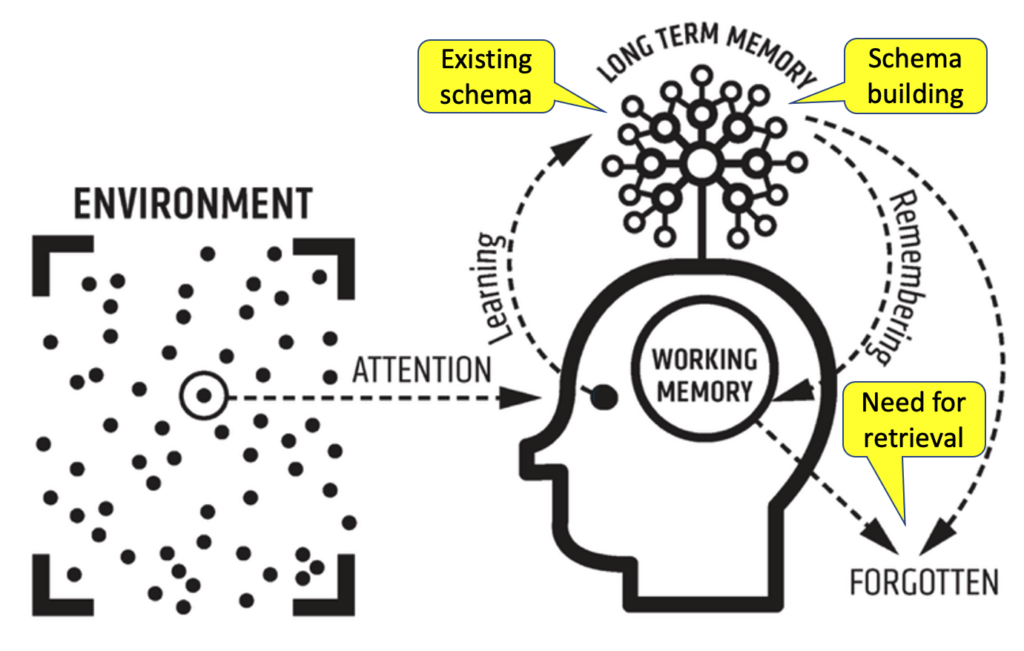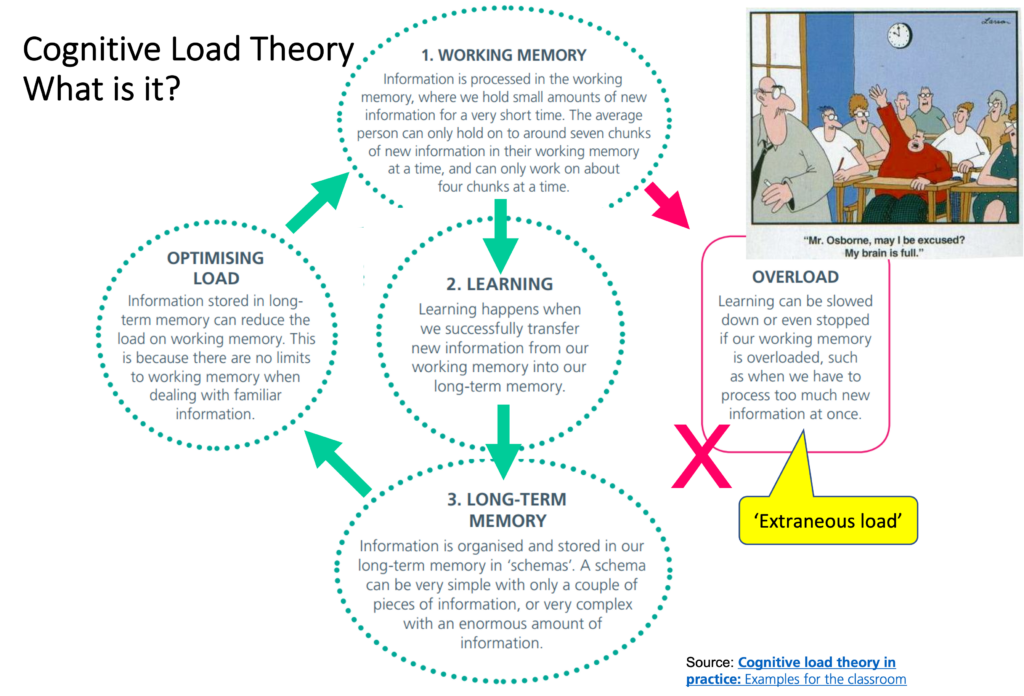Download the presentation of this section.

Let’s move on to think about what Cognitive Load Theory is not. It is not just feeding the brain with information – pouring information into the brain as if it’s a bath tub to be filled up. That is not what Cognitive Load Theory is.
So if that’s not what it is – what is it?
Cognitive Load Theory targets improvements in long-term memory in order to ‘free up’ working memory. It was developed in the 1980s by an Australian educational psychologist called John Sweller. His idea was that you have to long-term memory and working memory connected and the long-term memory has within it existing schema.

But as we go through life and especially as we’re learning we’re getting various stimuli and ideas which come to our attention. And in lessons at school for example learning will occur.
That learning will hopefully help us to build new schema or adapt existing schema. We remember these things in these existing schema.
But sadly sometimes we forget things. I say sadly, but it’s completely normal. So what do we have to do to try and make sure that our remembering of things in our long-term memory deals with that?
We need to retrieve things. This a key idea in Cognitive Load Theory – the importance of retrieval.
Let’s look at Cognitive Load Theory in a little more detail. It concerns the working memory which can hold about seven things – or about seven pieces of information …But can only work on about 4 maybe 5 at a time.
So as we learn, we try and get new information from our working memory to include in someway or other in our long time memory. In the long-term memory the information is stored in schema. Schema can be quite random or well organized. And as teachers we try to make sure students have strong robust correct schema. The problem with this is that the working memory, because of its limitations can suffer…what we call ‘overload’.

The famous cartoon by Gary Larson shows this ‘Mr Osborne’: the boys is saying ‘may I be excused my brain is full’. This is because he’s experiencing overload.
It’s also known as extraneous load. This means that the working memory has too much information going into it at one time, and is struggling to cope. Learning is not going to be very effective when that happens.
So our role as teaches is to try to optimise that load to make sure that we’re producing information students that students need in such a way that they’re not going to be overloaded. But also that they’re going to receive the correct amount challenge in order to make sure they can use their working memory to store things in the long-term memory in robust schema.
Source video: David Didau, BBC, https://www.bbc.co.uk/teach/teacher-support/latest-theories-on-how-we-learn/zjwm92p
